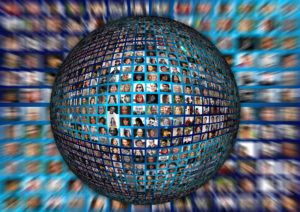
Updated December 2018
Back in the day, LinkedIn offered a service that let you graphically represent your LinkedIn network.
It gave you a way to visualize what how your connections were linked to you and to each other.
Unfortunately, it’s not possible to use the service anymore. But they contained some great lessons to be pulled from what my LinkedIn network looked like back then.
The Power of 2nd Level Connections
Here’s what mine looked like:
Think about what you are seeing here. This is my personal org chart. This visually describes how I’m connected to everyone I know and how they are connected to each other. These are the people I can call on for help and that can call upon me. It’s the web of relationships I’ve woven through my schools, past jobs, and social activities.
This represents a huge shift in how we structure our professional world, because my org chart belongs to me, not my organizations. If everyone in my network changed jobs tomorrow, my network wouldn’t look any different. If I change jobs tomorrow, my network wouldn’t look any different. My network is based on my relationships with my connections. It’s no longer predicated on what position I have or what company I work for.
It’s a graphical representation of what Dan Pink was writing about when he wrote Free Agent Nation back in 2001. We are becoming an economy increasingly comprised of one-person companies that come together to complete projects, and then disperse to find new and different combinations of people to work with.
I’m sure that I will come back to work with many of the individuals in my network in a different way than when we first met. Maybe I’ll do volunteer work with a past client. Or maybe an old college friend will become a business partner.
Are You Cultivating Your Personal Org Chart?
 The InMap allowed me to see the vibrancy of my network. But even if you can’t pull up a visual representation, you can still look cultivating your network.
The InMap allowed me to see the vibrancy of my network. But even if you can’t pull up a visual representation, you can still look cultivating your network.
It’s not just about the number of people in your network, it’s about the nature and structure of the connections. Some of the questions you can ask about your network:
- Is there a part of your offline network that is missing online? How can you change that? (Don’t be afraid to connect with people online. LinkedIn has over 500 million members so most professionals are there.
- Have you placed yourself strategically between groups so you can act as a connector and bring value to different parts of the network. If you only know people that already know each other, it’s hard to bring anything new to the mix.
- And though success isn’t always dependent on the size of your network, would it help if it grew a bit? (Here’s why a robust network is valuable.)

